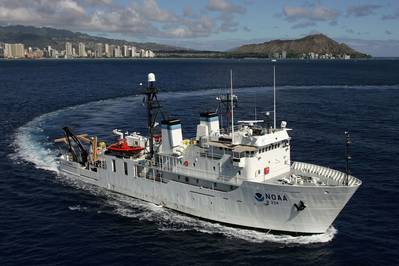U.S. National Ocean Service 2014 Budget Request
The FY 2014 President's Budget Request for the National Ocean Service (NOS) amounts to $529.2M.
The National Ocean Service (NOS) observes, measures, assesses and manages coastal, ocean and Great Lakes areas and provides science-based services to inform decision making, thereby positioning America's coastal communities, economies and ecosystems for the future.
This budget request represents a critical step toward reestablishing balance across investments in NOAA's missions. By emphasizing science, technology and earth observations, the NOS request recognizes the important and expanding uses of coastal, oceanographic and geospatial data for emergency preparedness and response, navigation safety and stewardship of ecological resources.
- Highlights of proposed new investments include:
- Coastal LIDAR Data Collection and Coordination ($8.0M) Working with U.S. Geological Survey and U.S. Army Corps of Engineers and through the Interagency Committee on Ocean and Coastal Mapping, this coordinated effort will streamline Federal Light Detection and Ranging (LIDAR) data acquisition activities, improve data collection methods, and substantially increase the quantity and quality of data collected and processed to meet a broad range of applications.
- Marine Sensor Innovation ($10M) This request supports the development and improvement of marine sensors that can deliver rapid and cost-effective data to inform decision making through improved physical, chemical and biological understanding of coastal, ocean, and Great Lakes systems.
- Restoration of the Coastal and Estuarine Land Conservation Program (CELCP), Sanctuary, and Research Reserve Construction Accounts ($6.7M) This investment will defray the risk of an increasing backlog of projects to provide facilities at the nation's network of national marine sanctuaries and estuarine research reserves.
- GRAV-D initiative (+$3M) With the requested increase, NOAA will accelerate the Gravity for the Redefinition of the American Vertical Datum (GRAV-D) initiative to collect airborne gravity data and produce a new national vertical datum. This effort will increase the accuracy of heights from 40 cm to 2 cm. Access to more accurate height data is increasingly critical to scientific, engineering and management decisions to improve commerce and economic efficiencies and better protect against inundation from storms, flooding, and sea level change.
- Marine Debris Research and Development (+$1M) This additional investment brings the total request for the Marine Debris Program to $6 million.
- Harmful Algal Bloom, Hypoxia and Coastal Ecosystem Research and Development ($6.0M) This competitive funding is managed by the National Centers for Coastal Ocean Science and combines research and applied science to provide the information and tools, such as ecological forecasts, that coastal managers need to combat and mitigate the accelerating decline of the ecosystems and living resources under their purview.
- Damage Assessment, Response and Restoration ($2.6M) This request will expedite resource damage assessments and restoration and improve NOAA's capacity to prepare for and respond to coastal environmental hazards, including two simultaneous large environmental hazard events in different regions.
- Regional Ocean Partnership Grants (+$1.5M) The increase will support additional implementation plan actions of regional oceans partnerships, including improving coastal hazards resilience and conserving habitat.
In addition to these increases, the budget request largely maintains other NOS services and capabilities that employ partnerships, stakeholder-centric services, and place-based strategies to help coastal communities mitigate and adapt to environmental change.

















